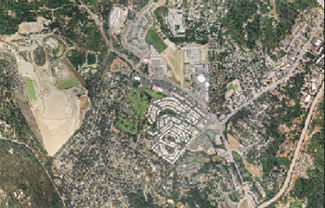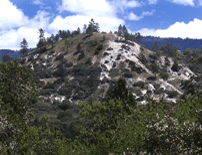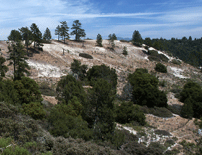
Genetic erosion is the loss of unique genetic material, including alleles (gene forms), genes, and genotypes. In the Sandhills, genetic erosion can result from many factors including:
The introduction of plants and animals from non-Sandhills populations can dilute the locally adapted genetic complexes-genetic resources that adapt Sandhills populations to their unique environment. Introduction of non-sandhills genes can swamp the native genes, reducing the success of the native Sandhills populations and disrupting the evolutionary processes through which they might become distinct species.

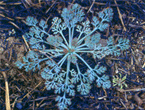

Occasionally poppies with intermediate flower and foliage characteristics are observed in the Sandhills (bottom), suggesting that the genetic material of more widespread poppies is being introduced into the Sandhills, perhaps from nearby developments where they are commonly planted. This introduction of non-Sandhills poppy genes could disrupt the locally adapted gene complexes and alter the course of evolution of Sandhills poppies as a unique species.
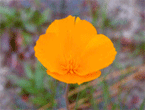

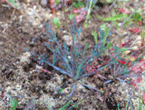
Sandhills habitat occurs as biological islands within a sea of mixed evergreen and redwood forests. Populations on separate habitat patches may have been isolated for millions of years, even though they are within a kilometer. Geographically isolated populations can go down separate evolutionary trajectories, and ultimately differentiate into separate species.
Several plant populations exhibit morphological differences among Sandhills sites. Three plant species have multii-color flowers in certain Sandhills habitat patches, yet yellow flower morphs at other sites. This shift toward all yellow flowers could result from pollinators preferentially visiting yellow flowers. If they have a genetic basis, these morphological differences may represent speciation in progress!
Artificial movement of genetic material among Sandhills sites could erode the genetic diversity between Sandhills populations. To avoid this, restoration and reclamation projects must use only site-specific genetic material (e.g. seeds, cuttings.)


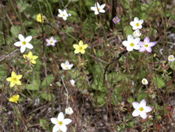
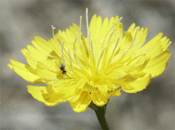
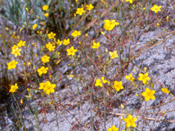

The greatest cause of genetic erosion in the Sandhills is the local extinction (extirpation) of populations due to the loss, fragmentation, and degradation of habitat. Populations in geographically isolated Sandhills sites can become genetically differentiated, as a result of genetic drift as well as natural selection. Extirpations or dramatic reductions in populations cause genetic bottlenecks, which decrease genetic diversity, thus further threatening the persistence of rare and endangered species.
